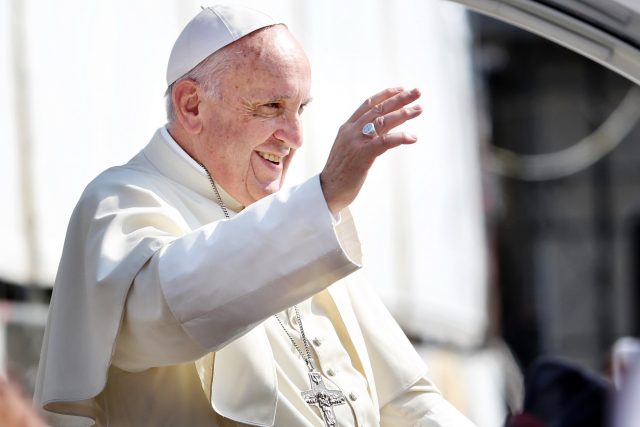
With the death of Pope Francis, Italy is preparing to experience five days of national mourning, decreed by the Presidency of the Council of Ministers.
A measure that is ideally linked to the celebration of the 80th anniversary of the country’s liberation from Nazi-fascism, scheduled for April 25, the eve of the Pontiff’s funeral in St. Peter’s Basilica. But what does this national mourning entail, in concrete terms, for institutions, citizens, schools, offices and economic activities? And what symbolic importance does it have for the Italian community?
-
The regulatory basis and the official protocol
The legal framework of reference is represented by the circular of the Presidency of the Council of 18 December 2002, which regulates state funerals and national mourning. According to these provisions:
Flags at half-mast: during the five days of mourning all official flags – Italian and European – displayed on public buildings, institutional offices and Italian diplomatic representations must remain at half-mast.
Black veil for internal displays: flags inside offices and institutional rooms are “darkened” using two strips of black veil arranged in a tie.
Involvement of foreign offices: the Ministry of Foreign Affairs provides instructions to diplomatic and consular representations abroad and can also invite foreign representatives accredited in Italy to display flags at half-mast. These measures are mandatory in the institutional sphere, while they remain optional for private citizens and non-state entities.
-
Schools, offices, commerce: openings guaranteed, but events suspended or reduced
National mourning, by law, does not affect the regime of working days: it is not recognized as “non-working”, therefore it does not require the mandatory closure of schools, public offices, companies or commercial activities. However:
Minute of silence: in schools, offices and during sporting or cultural events, a minute of silence is prescribed in memory of the Pope. Suspension or reduction of public events: municipalities and organizers can decide to cancel, postpone or hold cultural, sports and entertainment events in a limited or symbolic form, out of respect for the mourning period.
Participation of public figures: representatives of institutions and political forces are authorized to participate only in charity events, such as concerts or ceremonies aimed at raising funds, avoiding celebrations of another nature.
-
The impact on political practice: postponements and official commitments
Question time in the Senate: the session of April 23, scheduled for 4 pm, will most likely be postponed, pending confirmation from the Conference of Group Leaders of Palazzo Madama. Giorgia Meloni’s planned trip to Uzbekistan and Kazakhstan (April 25–27) risks being postponed, as the law requires the highest offices of the State, from the President of the Republic downwards, to participate in official ceremonies related to national mourning.
In fact, Meloni will be called to remain in Italy to take part in the funeral and commemorative moments, making an absence on those days impossible.
-
History and precedents: national mourning for major events and personalities
The use of national mourning for the death of important personalities is a consolidated practice in the Italian Republic. Over the last twenty years, the most recent cases have been:
2023: mourning for the state funeral and collective day of commemoration for Silvio Berlusconi.
2009: day of mourning for the victims of the earthquake in L’Aquila.
2018: national mourning for the victims of the collapse of the Morandi Bridge in Genoa.
The Catholic world also recalls that national mourning had already been ordered for previous Popes: in 1958 for Pius XII, in 1963 for John XXIII, in 1978 for Paul VI and in 2005 for John Paul II. The decision to declare mourning for Pope Francis is therefore part of a tradition that recognizes the Pontiff as a figure of great spiritual and moral importance for Italy and for the entire world.
-
The meaning for Italy and Italians
National mourning is not just a formal fulfillment: it represents a sign of unity and collective participation in the grief for the loss of a spiritual leader of global importance. The five days of mourning will offer the Italian public and ecclesial communities a moment of reflection on the message of Pope Francis, on his demands for social justice, attention to the poor and dialogue between peoples.
For many citizens, especially Catholic faithful, the national mourning will be an opportunity to celebrate the life and legacy of the Jesuit Pontiff, paying homage to his pastoral commitment and his words of hope. At the same time, respect for the protocol, with flags at half-mast and minutes of silence, testifies to the secular dimension of the Italian State, capable of recognizing the value of a public figure even beyond religious faiths. The five days of national mourning decreed for the death of Pope Francis mark a historic moment for Italy, with symbolic and practical repercussions involving institutions, schools, businesses and citizens. While the Conclave has already begun and the favored cardinals prepare for the great “vacant” of St. Peter, the country unites in a sense of communion and remembrance, confirming the tradition and importance of the Pope in contemporary Italian history.



 Subscribe
Subscribe